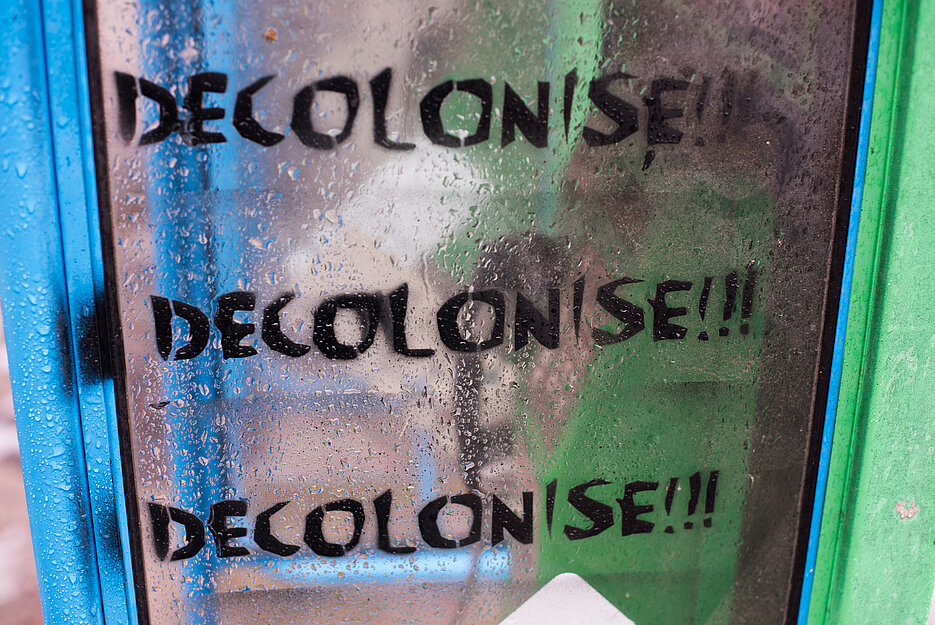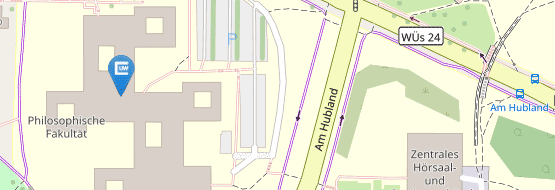Colonial Pasts and Cultures of Memory: How to Deal with a Nation’s Past in the Present
29.06.2021A Conversation with Cheryl Finley (USA), Veronica Jackson (USA), and Rushay Booysen (South Africa). Organized by the American Studies Dept., University of Würzburg, Chair: PD Dr. Heike Raphael-Hernandez (University of Würzburg). June 29, 2021, 14.15 – 15.45 (ZOOM)
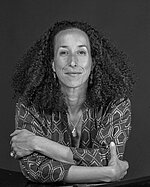 Cheryl Finley is director of the Atlanta University Center Art History + Curatorial Studies Collective and Distinguished Visiting Professor of Art History at Spelman College. A visionary leader committed to engaging strategic partners to transform the art and culture industry, she leads an innovative undergraduate program at the world’s largest historically Black college and university (HBCU) consortium in preparing the next generation of African American museum and visual arts professionals. She is a curator, contemporary art critic, and award-winning author noted for Committed to Memory: The Art of the Slave Ship Icon (2018), the first in-depth study of the most famous image associated with the memory of slavery—a schematic engraving of a packed slave ship hold—and the art, architecture, poetry, and film it has inspired since its creation in Britain in 1788. Finley's current research includes Black Market: Inside the Art World, a book on the history of Black artists, gallerists and collectors in the art market, and Pictures in My Mother's House, a memoir. She is on leave from Cornell University, where she is an associate professor in the History of Art Department.
Cheryl Finley is director of the Atlanta University Center Art History + Curatorial Studies Collective and Distinguished Visiting Professor of Art History at Spelman College. A visionary leader committed to engaging strategic partners to transform the art and culture industry, she leads an innovative undergraduate program at the world’s largest historically Black college and university (HBCU) consortium in preparing the next generation of African American museum and visual arts professionals. She is a curator, contemporary art critic, and award-winning author noted for Committed to Memory: The Art of the Slave Ship Icon (2018), the first in-depth study of the most famous image associated with the memory of slavery—a schematic engraving of a packed slave ship hold—and the art, architecture, poetry, and film it has inspired since its creation in Britain in 1788. Finley's current research includes Black Market: Inside the Art World, a book on the history of Black artists, gallerists and collectors in the art market, and Pictures in My Mother's House, a memoir. She is on leave from Cornell University, where she is an associate professor in the History of Art Department.
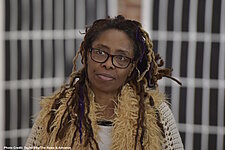 Veronica Jackson’s background encompasses the critical examination of visual culture. As an architect, designer, and artist, she creatively solves problems related to the structural systems within virtual and built environments. As an artist she records, interprets, and makes aware the complexities in which humans exist and affect their social surroundings. Her visual art making practice is a combination of past professional disciplines, present lived experiences, and the cache of contemporary and historic research accumulated. Jackson’s initial and ongoing project—The Burden of Invisibility—is the physical manifestation of her evolution from designer to visual artist, as well as a reaction to the world around her. Jackson’s work investigates how Black women see, don’t see, value, or devalue themselves in visual culture, and how these attitudes affect their sense of agency in constructing their own imagery or endeavors to mark space. Her oeuvre is text-based, autobiographical, and critically elucidates the visualization of gender and race in America, with a special focus on the portrayal, perception, and legacy of Black women in popular media both past and present.
Veronica Jackson’s background encompasses the critical examination of visual culture. As an architect, designer, and artist, she creatively solves problems related to the structural systems within virtual and built environments. As an artist she records, interprets, and makes aware the complexities in which humans exist and affect their social surroundings. Her visual art making practice is a combination of past professional disciplines, present lived experiences, and the cache of contemporary and historic research accumulated. Jackson’s initial and ongoing project—The Burden of Invisibility—is the physical manifestation of her evolution from designer to visual artist, as well as a reaction to the world around her. Jackson’s work investigates how Black women see, don’t see, value, or devalue themselves in visual culture, and how these attitudes affect their sense of agency in constructing their own imagery or endeavors to mark space. Her oeuvre is text-based, autobiographical, and critically elucidates the visualization of gender and race in America, with a special focus on the portrayal, perception, and legacy of Black women in popular media both past and present.
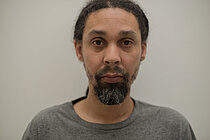 Rushay Booysen is a photojournalist from Gqeberha (formerly known as Port Elizabeth), South Africa. Among his work one finds his photo exhibition titled “Coloured: A Collage of a Hybrid Society.” His work has been featured on CNN, in a digital library in Barcelona, and recently at the African American Art & Culture Center in San Francisco. In an exhibition in Dubai’s Mojo Gallery, his work was included in the first series of African art in the Middle East. In June of 2010, he spoke at New York University, California Lutheran University, the University of Michigan, and the African Museum (San Francisco) where he presented a documentary focused on the work amongst educators and artists in his hometown Gqeberha. He has also hosted a discussion at San Francisco State University where he spoke on the role and power of the internet in advocating and educating the world on African culture.
Rushay Booysen is a photojournalist from Gqeberha (formerly known as Port Elizabeth), South Africa. Among his work one finds his photo exhibition titled “Coloured: A Collage of a Hybrid Society.” His work has been featured on CNN, in a digital library in Barcelona, and recently at the African American Art & Culture Center in San Francisco. In an exhibition in Dubai’s Mojo Gallery, his work was included in the first series of African art in the Middle East. In June of 2010, he spoke at New York University, California Lutheran University, the University of Michigan, and the African Museum (San Francisco) where he presented a documentary focused on the work amongst educators and artists in his hometown Gqeberha. He has also hosted a discussion at San Francisco State University where he spoke on the role and power of the internet in advocating and educating the world on African culture.
This panel is open to the public, but prior registration for the ZOOM log-in info is required. To sign up, please send an e-mail request to: heike.raphael-hernandez@uni-wuerzburg.de


